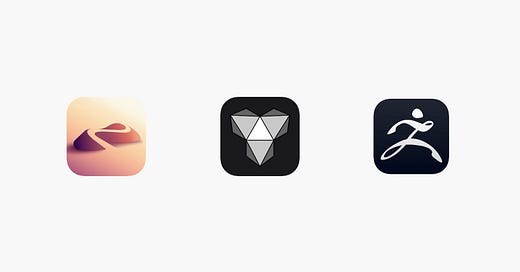This has been a great year for 3D sculpting and modeling on the iPad. We got new apps that fill long-existing gaps in the 3D workflow on the iPad, and several improvements to existing apps that make it easier for 3D content creators to be more productive on the iPad. As someone fairly new to 3D work (I think I’ve been working with 3D software for about a year or two now), I’ve been impressed by the number of new tools that have come to the iPad in the past year. I figured I would put together a bit of an overview of some of my favorite new and old 3D modeling and sculpting apps, and track the progress we’ve made in 2024 on the 3D iPad software front. As a disclaimer, I am not affiliated in any way with any of the softwares discussed in this article.
3D Modeling on the iPad
Earlier this year, a new app called Valence 3D entered the market, offering several 3D modeling focused features in an app that’s specially designed for Apple’s ecosystem. I wrote a piece about Valence earlier this year when I first tried it, but a lot has improved in this app since my initial write-up. The app now includes a great object snap alignment feature which makes it much easier to create more complex and precise 3D models with a combination of parts and primitives. There’s also been plenty of other smaller improvements and feature additions that continue to make this app a stronger alternative to some traditional desktop 3D modeling apps. I would heartily recommend this app to anyone wanting a 3D modeling app for the iPad. Valence 3D offers a great value to cost ratio, and is still improving at a steady pace. I’d say it is easily the best single-purchase 3D modeling app I have ever tried on the iPad, and I prefer it for 3D modeling even over Blender on my Mac Mini, because Blender’s UI isn’t nearly as streamlined, intuitive, or clean as Valence 3D in my opinion. You can check out more details about Valence 3D here.
3D Sculpting on the iPad
In 3D sculpting news, Maxon brought ZBrush to the iPad for the first time this last September. ZBrush is a popular, industry-standard 3D sculpting app that offers quite a few advanced 3D sculpting tools. This is big news for creative professionals who are familiar with the desktop version, but want to take their 3D sculpting projects with them on the go without having to carry a laptop. The app also supports the Apple Pencil, making the sculpting experience feel more natural than using a mouse or trackpad. ZBrush for iPad is available as a free install with limited features, or a yearly subscription for access to more of the advanced desktop features. With ZBrush coming to the iPad, I suspect more related desktop 3D modeling and sculpting apps will follow suite in the near future.
Nomad Sculpt, another 3D sculpting app designed specifically for the iPad and other tablets, also made major improvements this year, adding long-awaited features including a quad remember, and the developer announced he is planning on bringing the app to desktop platforms as well in the near future. I personally have actually found Nomad Sculpt to be more efficient for me than the free version of ZBrush. One of the biggest hurtles for me trying to pick up ZBrush was the UI. The UI of the iPad ZBrush app is significantly improved over the desktop version in my opinion, and is certainly refined, but as I am not very familiar with the desktop version, some of the UI design decisions were confusing to me, and many of the tools that I use often seemed harder to access than they are in Nomad Sculpt. While ZBrush is a newer app, I feel the UI of Nomad Sculpt may be more intuitive and a bit more approachable for beginners who have no prior experience with the desktop version of ZBrush. Of course this is a subjective thing, but that was the impression I took away from testing the free version of ZBrush. Nomad Sculpt undeniably offers an advantage for those who don’t want to commit to a subscription, since Nomad Sculpt is a single-purchase app, and Nomad Sculpt offers a raft of advanced desktop-class features that should be sufficient for many.
Conclusion
I think this year was a big year for 3D modeling and sculpting on the iPad, and I’m excited to see what 3D content-creation apps will come in the future. I think now with the inclusion of ZBrush, more desktop 3D apps will follow suit and port to the iPad to complete traditional desktop user’s workflows. The future looks bright for 3D content creation on the iPad, and this year probably more than any pushed the envelope with the introduction of new 3D modeling apps (a longtime gap in the iPad 3D content creation workflow was the lack of such dedicated modeling apps), and the introduction of a big industry leading tool like ZBrush on the iPad for the first time ever. Now what I would like to see is a solid, single-purchase 3D rigging app, it seems we’re so close to a complete 3D workflow on the iPad including 3D animation. With ZBrush aboard, it makes me wonder if Blender will port to the iPad as well. I’ve heard some rumors that Blender is working on an iPad port. Hopefully if Blender does port over to the iPad, they can work some of the UI magic that softwares like Nomad Sculpt and Valence 3D have. But regardless, I think this has been an important year for 3D software on the iPad, and the future looks promising for more 3D focused apps to come to the iPad in the future.




